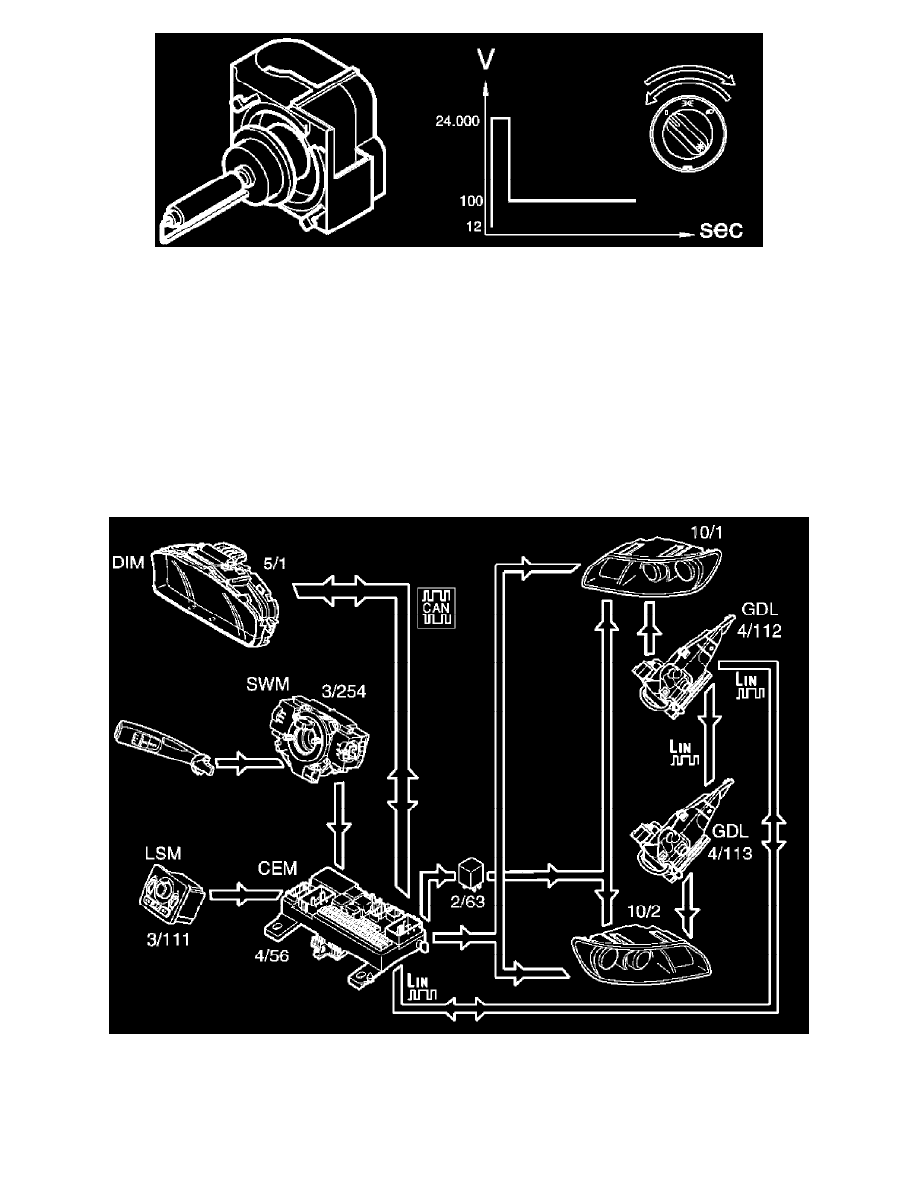V50 L5-2.4L VIN 38 B5244S4 (2006)

-
High voltage is required to light the Bi-Xenon lamp.
-
A high voltage unit is connected to each Bi-Xenon lamp. This transforms 12-V voltage to the approximately 24,000 V required to light the lamp.
Once the lamp is on, voltage is lowered to the approximately 100 V required to keep the lamp lit.
-
Each time voltage is supplied to the high voltage unit, an attempt is made to light the Bi-Xenon lamp. If this voltage does not exceed 9.5 V during
a time period of 200 ms, the lamp does not light. If voltage is too low, such as after a voltage-consuming cold start, the lamp does not light just
because the engine is running and the alternator begins charging. A new attempt must be made to start the lamp by turning the light switch to the
"0" or parking light position and then back to the low beam position.
WARNING: Because of the high voltage it is important to follow the instructions for working with Bi- Xenon lamps and the high voltage
unit!
Function
Headlights
If the knob is in the correct position in the light switch module (LSM) (3/111), the central electronic module (CEM) is instructed to light low beam.
The central electronic module (CEM) (4/56) powers the Bi-Xenon lamps directly via an output.
To switch to high beam, the left control stalk is pulled toward the steering wheel. A directly connected signal is sent from the steering wheel module
